A fine 18th-century George III mahogany bow-front stick barometer
by noted London makers William & Samuel Jones.
Sold
Request Information
Follow Us
A fine 18th-century George III mahogany bow-front stick barometer by noted London makers William & Samuel Jones.
The mahogany-veneered case has an austere form with only the moulded caddy top and the urn-shaped cistern cover to break its soberness. The silvered register plates are protected by a bowed glass, the recorder with vernier scale being operated by a knob below the register plate. The register plates are calibrated for 27 – 31 inches on the right, whereas on the left the pertaining weather conditions are engraved: FAIR, Change and RAIN. The makers have signed the barometer at the top of the scales in the following manner; W & S Jones Holborn LONDON. A special feature of this barometer is that it has a leather-based cistern.
William and Samuel Jones practiced in the Holborn Hill area of London from about 1787, when their father John died and left them the business, until about 1805, and later in the High Holborn area. They were very technically accomplished, William in his younger years having worked for both Benjamin Martin and George Adams.
Dimensions
Height: 98 cm.
Literature
N. Goodison, English Barometers 1680-1860, Woodbridge: 1985, pp. 84, 166, 168-169
PREVIOUSLY SOLD
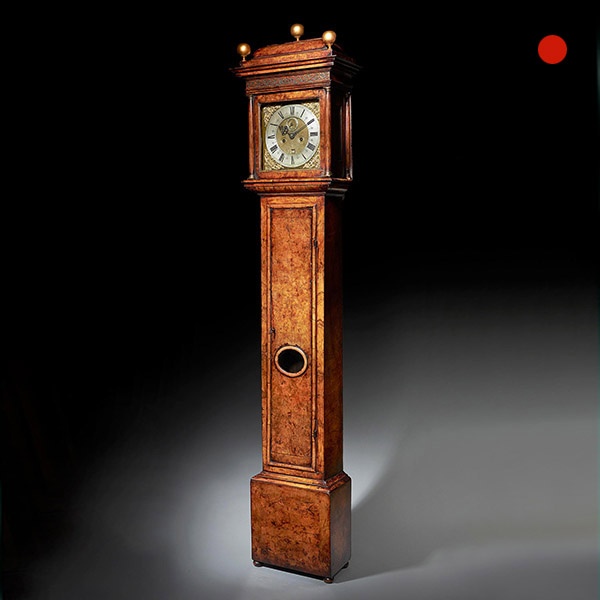
17th Century William and Mary Eight Day Burr Walnut Longcase Clock, John Martin
17th Century William and Mary Eight Day Burr Walnut Longcase Clock, John Martin Sold Follow Us17th Century William and Mary Eight Day Burr Walnut Longcase Clock, John Martin The attractive burr walnut-veneered oak case is of classic design...

18th Century German Equinoctial Pocket Sundial and Compass by Ludwig Theodor
18th Century German Equinoctial Pocket Sundial and Compass by Ludwig Theodor SOLD Follow Us18th Century German Equinoctial Pocket Sundial and Compass by Ludwig Theodor From the first quarter of the 18th century - a German brass equinoctial...
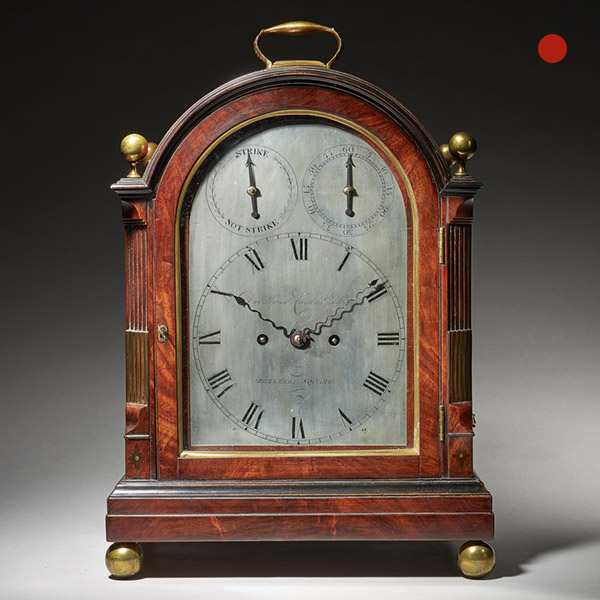
Fine George III Eight-Day Striking Mahogany Bracket Clock with Trip Repeat
Fine George III Eight-Day Striking Mahogany Bracket Clock with Trip Repeat SOLD Follow UsFine George III Eight-Day Striking Mahogany Bracket Clock with Trip Repeat A fine George III eight-day striking mahogany bracket clock with trip repeat...

Fine 17th Century Charles II Spring Driven Table Clock by Deodatus Threlkeld
Fine 17th Century Charles II Spring Driven Table Clock by Deodatus Threlkeld SOLD Follow UsFine 17th Century Charles II Spring Driven Table Clock by Deodatus Threlkeld The eminent maker Deodatus Threlkeld (1658-1732) was an apprentice of...

19th Century Gilt-Brass Engraved Striking and Repeating Carriage Clock
19th Century Gilt-Brass Engraved Striking and Repeating Carriage Clock Sold Follow Us19th Century Gilt-Brass Engraved Striking and Repeating Carriage Clock The superb engraved gilt brass gorge case has facetted glass panels to all sides so...

Important Charles II 17th Century Princes Wood and Marquetry Longcase Clock
Important Charles II 17th Century Princes Wood and Marquetry Longcase Clock SOLD Follow UsImportant Charles II 17th Century Princes Wood and Marquetry Longcase Clock A unique and important Charles II 17th century month-going Princes wood and...

17th Century William and Mary Eight Day Burr Walnut Longcase Clock, John Martin
17th Century William and Mary Eight Day Burr Walnut Longcase Clock, John Martin Sold Follow Us17th Century William and Mary Eight Day Burr Walnut Longcase Clock, John Martin The attractive burr walnut-veneered oak case is of classic design...

18th Century German Equinoctial Pocket Sundial and Compass by Ludwig Theodor
18th Century German Equinoctial Pocket Sundial and Compass by Ludwig Theodor SOLD Follow Us18th Century German Equinoctial Pocket Sundial and Compass by Ludwig Theodor From the first quarter of the 18th century - a German brass equinoctial...

Fine George III Eight-Day Striking Mahogany Bracket Clock with Trip Repeat
Fine George III Eight-Day Striking Mahogany Bracket Clock with Trip Repeat SOLD Follow UsFine George III Eight-Day Striking Mahogany Bracket Clock with Trip Repeat A fine George III eight-day striking mahogany bracket clock with trip repeat...

Fine 17th Century Charles II Spring Driven Table Clock by Deodatus Threlkeld
Fine 17th Century Charles II Spring Driven Table Clock by Deodatus Threlkeld SOLD Follow UsFine 17th Century Charles II Spring Driven Table Clock by Deodatus Threlkeld The eminent maker Deodatus Threlkeld (1658-1732) was an apprentice of...

19th Century Gilt-Brass Engraved Striking and Repeating Carriage Clock
19th Century Gilt-Brass Engraved Striking and Repeating Carriage Clock Sold Follow Us19th Century Gilt-Brass Engraved Striking and Repeating Carriage Clock The superb engraved gilt brass gorge case has facetted glass panels to all sides so...

Important Charles II 17th Century Princes Wood and Marquetry Longcase Clock
Important Charles II 17th Century Princes Wood and Marquetry Longcase Clock SOLD Follow UsImportant Charles II 17th Century Princes Wood and Marquetry Longcase Clock A unique and important Charles II 17th century month-going Princes wood and...
YOU MAY ALSO LIKE

A Rare and Important Charles II 17th Century Table Clock by Henry Jones
A Rare and Important Charles II 17th Century Table Clock by Henry Jones £85,000Follow UsA Rare and...
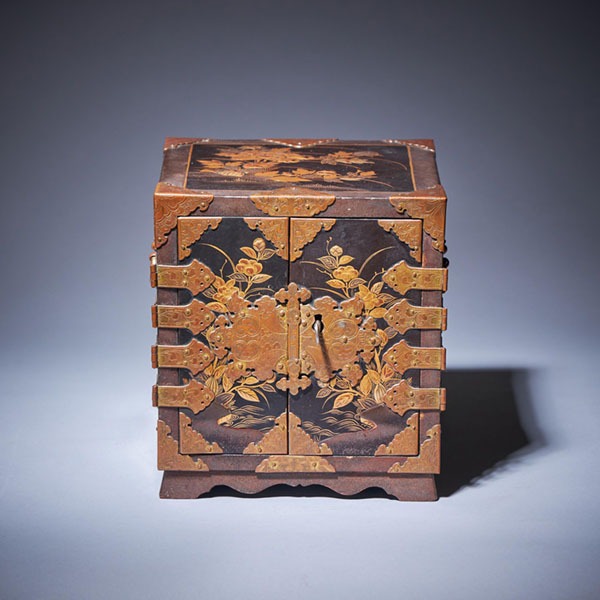
Important Early Edo Period 17th Century Miniature Japanese Lacquer Cabinet
Important Early Edo Period 17th Century Miniature Japanese Lacquer Cabinet £36,000Follow...

Fine Scottish Two-Day Marine Chronometer Signed and Numbered D. McGregor
Fine Scottish Two-Day Marine Chronometer Signed and Numbered D. McGregor £6,500Follow UsFine...
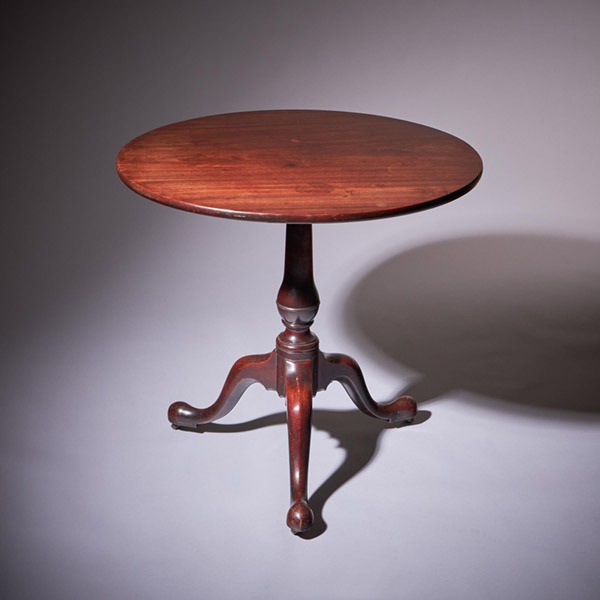
18th Century George III Mahogany Tripod Table, Circa 1770
18th Century George III Mahogany Tripod Table, Circa 1770 £2,200Follow Us18th Century George III...
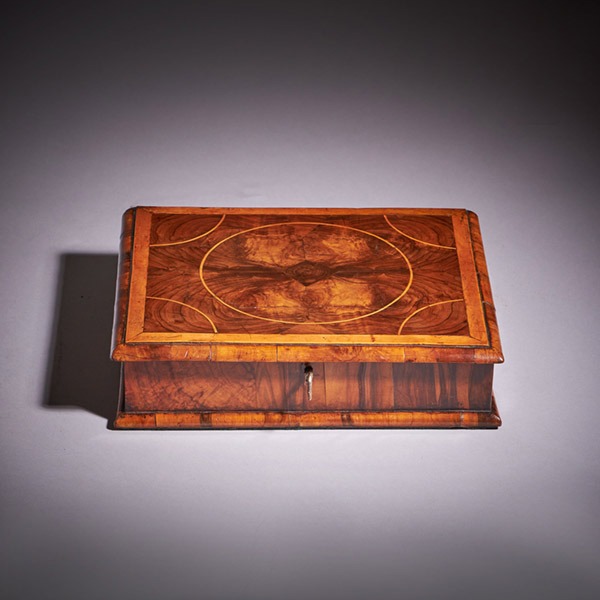
Fine William and Mary 17th Century Olive Oyster Lace Box
Fine William and Mary 17th Century Olive Oyster Lace Box £2,600Follow UsFine William and Mary 17th...
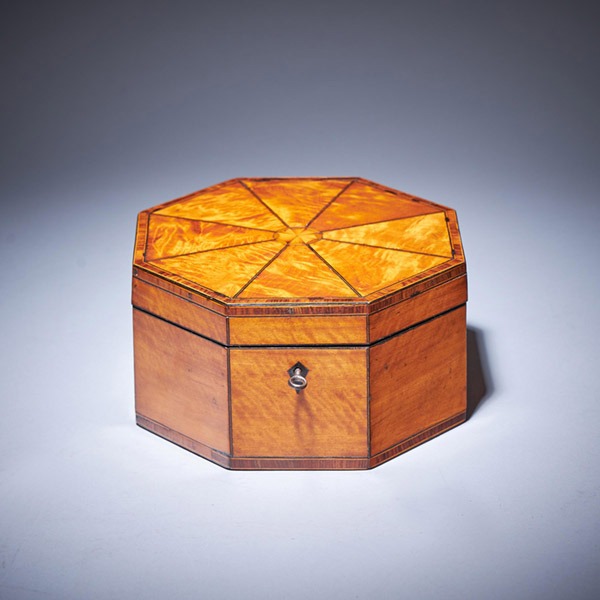
A Fine and Rare George III Octagonal Figured Satinwood Box, C.1790
A Fine and Rare George III Octagonal Figured Satinwood Box, C.1790 £2,200Follow UsA Fine and Rare...

A Rare and Important Charles II 17th Century Table Clock by Henry Jones
A Rare and Important Charles II 17th Century Table Clock by Henry Jones £85,000Follow UsA Rare and...

Important Early Edo Period 17th Century Miniature Japanese Lacquer Cabinet
Important Early Edo Period 17th Century Miniature Japanese Lacquer Cabinet £36,000Follow...

Fine Scottish Two-Day Marine Chronometer Signed and Numbered D. McGregor
Fine Scottish Two-Day Marine Chronometer Signed and Numbered D. McGregor £6,500Follow UsFine...

18th Century George III Mahogany Tripod Table, Circa 1770
18th Century George III Mahogany Tripod Table, Circa 1770 £2,200Follow Us18th Century George III...

Fine William and Mary 17th Century Olive Oyster Lace Box
Fine William and Mary 17th Century Olive Oyster Lace Box £2,600Follow UsFine William and Mary 17th...

A Fine and Rare George III Octagonal Figured Satinwood Box, C.1790
A Fine and Rare George III Octagonal Figured Satinwood Box, C.1790 £2,200Follow UsA Fine and Rare...





